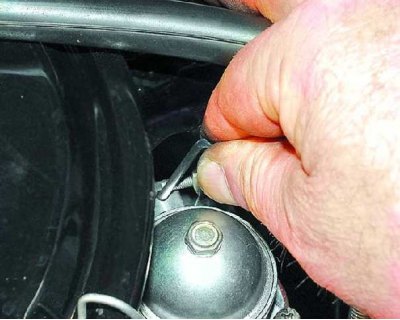
1. Place the shift lever in neutral position.

2. After a long stop, pump gasoline into the carburetor float chamber by pressing the fuel pump lever several times.

3. Pull out the carburetor choke control knob.

4. If the air temperature is below minus 15°C, press the clutch pedal all the way down. At an air temperature of minus 25°C and below, it is recommended to press the accelerator pedal 2–3 times before starting, and also at this temperature, close the ventilation holes in the bumper and radiator lining for more intensive warming up of the engine.

5. Insert the key into the ignition switch and turn it to the "II" (starter activation). While doing this, do not press the accelerator pedal. If the engine does not start on the first attempt, turn off the ignition and after 20–30 seconds turn on the starter again. Do not turn on the starter for more than 10–15 s. After starting the engine, release the key, which automatically returns to the "I" (ignition on).

6. After starting the engine, as soon as it starts to run steadily, gently release the clutch pedal. Gradually, as the engine speed increases, return the carburetor choke control knob to its original position (air damper fully open).
Warm and hot engine start

8. When starting a hot engine (the needle of the coolant temperature gauge is approaching the red zone of the scale) the carburetor choke control knob must be depressed. Depress the accelerator pedal about 1/3 of its travel, engage the starter and gradually release the pedal as soon as the engine starts to run smoothly.
7. The choke handle must be depressed. Engage the starter, gently depress the accelerator pedal and release it when the engine starts.
